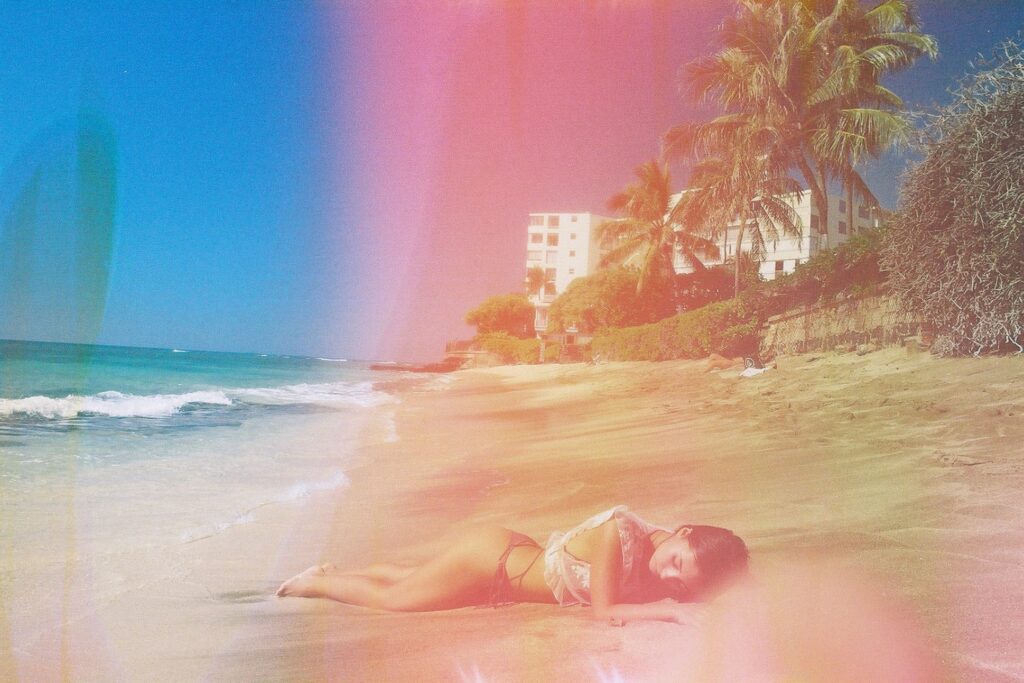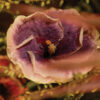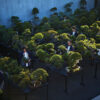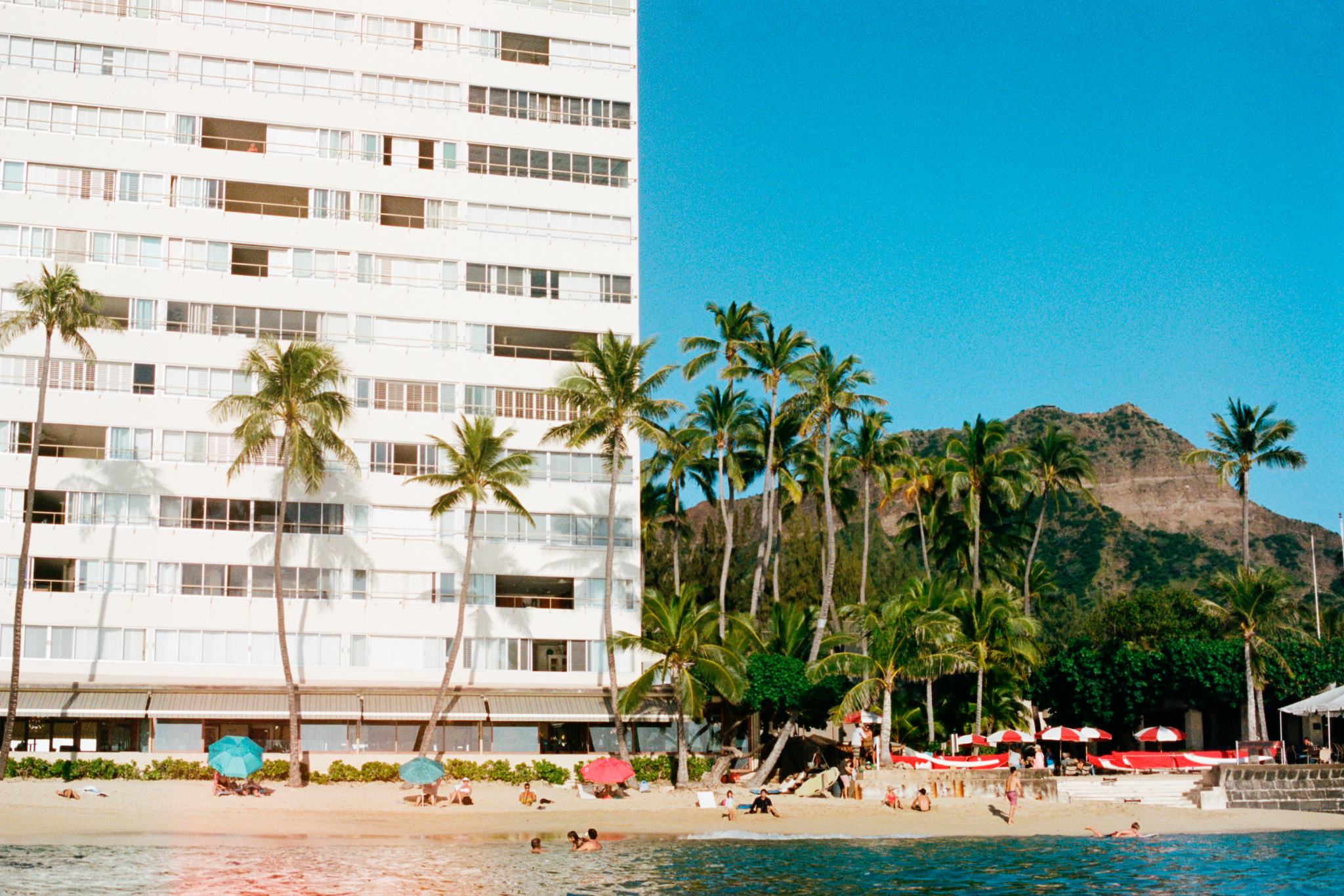Text and images by Christian Cook

At dawn, the sun backlights Diamond Head, rising out of the starry darkness. The serrated volcanic crater stands sentinel over Waikīkī. Mynah birds chirp, and the “pad pad pad” of jogging shoes breaks the quiet of Kapi‘olani Park. Along Kalākaua Avenue, the wheels of my car splash through puddles left behind by overnight rain showers. I pull over, park, take a last sip of coffee, and then unstrap my surfboard from the car’s roof racks.
Kaimana Beach is silent as I walk across its white sand. Once I’m knee-deep in the crystal-clear aquamarine waters, I push my surfboard seaward, leap aboard, and paddle out to greet another day. Fifty yards out, I use Kapua Channel to paddle around curling waves peeling off over a submerged reef. This wondrous surfing playground is known as Tonggs, named after the surfer sons of a prosperous Honolulu businessman, Ruddy Fah Tongg, who chose this idyllic coastline to build his estate in 1946. Tonggs is but one of a half-dozen equally notable waves surfed here year-round.

This is my corner of Waikīkī, the far east side of the urban resort destination. No high-fashion shops beckon night and day, no wide sidewalks fill with visitors from around the world, no beachboys rule the waves. Its dreamy landscape is bordered by thin beaches that appear and disappear with the seasons, lined by modernist architecture. Hidden pathways that meander along the shore lead to privacy and relaxation.
Here, from the 1927 Beaux-Arts style Waikīkī Natatorium War Memorial to the foot of Diamond Head about a mile to the east, life is led with ease. Becoming sans souci, without a care, letting the busyness of the everyday world be the concern of someone else—this is the de facto attitude of those drawn to this low-key piece of O‘ahu’s south shore.
Once upon a time, in the late 19th century, hotelier George Lycurgus dreamed the Waikīkī dream. Lycurgus built small bungalows with thatched roofs, and christened the oceanfront resort Sans Souci. His doors swung open in 1893 and Sans Souci became one of the first visitor accommodations in Waikīkī.
Scottish Victorian author Robert Louis Stevenson enjoyed a sojourn at this early destination. Perhaps he even sat under the landmark Sans Souci hau tree, colored with splashes of red-orange blossoms, when he wrote this paean: “If anyone desires such old fashioned things as lovely scenery, quiet pure air, clear sea water, good food, and heavenly sunsets hung out before his eyes over the Pacific and the distant hills of Waianae, I recommend him cordially to the Sans Souci.”


After surfing, a friend and I sip a smoothie at Sans Souci Beach, known by most locals as Kaimana Beach. Nearby, children frolic in the lapping shorebreak under the watchful eyes of mothers. Sunbathers cooled by steady tradewinds lay in pairs on rainbow-hued beach towels. Stand-up paddle boarders sluice their ways out to the surf, while snorkelers float weightlessly offshore.
A short walk to the west across the sand, beachgoers slip in and out of the changing rooms located beneath the bleachers of the stately natatorium. Today, the natatorium’s ocean water pool, once the largest of its kind in the United States, has been left abandoned to nature, though hope for its revitalization remains. Stepping back in time to August 24, 1927, you would find Duke Kahanamoku—the Olympic champion swimmer and the foremost surfer of the 20th century, who was born in the Kālia area of Waikīkī—taking the very first swim in the pool, an event planned to fall on his birthday. Duke’s Native Hawaiian ancestors found Waikīkī a choice locale of their own, drawn by its balmy weather, perfect surfing waves, and abundant fishing grounds.
The Hawaiian sport of surfing was also championed in the early 1900s by Mid-Pacific magazine editor Alexander Hume Ford, who lured author Jack London onto a wooden surfboard in Waikīkī. The California author-adventurer responded in print with rave reviews of the sport. Ford opened the Outrigger Canoe Club in 1908 to perpetuate Hawaiian water sports and built a clubhouse right on the beach between the present Moana Surfrider and Royal Hawaiian Hotel. Today, the Outrigger Canoe Club stands just east of Kaimana Beach, next to the Elks Lodge. Both establishments are understated private clubs that fit seamlessly into the relaxed world of east Waikīkī.

Ka‘ahumanu, the favorite wife and expert surfing companion of King Kamehameha, often rode the waves of Kapua, which means the “flower,” as the waters near Kaimana Beach were known then. In 1812, a lover’s spat took a young life when Kamehameha sacrificed his teenage nephew, Kanihonui, whom Ka‘ahumanu had seduced. The iwi, or bones, of Kanihonui lay at Papa‘ena‘ena Heiau, a site on the western slope of Diamond Head now covered by the La Pietra School. After each surf session at Kapua, Ka‘ahumanu paddled in and wept over his remains.
Despite this sorrowful tale, Kaimana Beach is the site I return to during golden hour, when the warm hues of Hawai‘i reflect the light of a glorious sunset. A dinner invitation takes me to the terrace of an oceanfront apartment nearby.
As the evening moves on, a full moon rises over Waikīkī. The palm fronds of a stand of coconut trees splinter the moonlight reflecting off the surf as the tradewinds still, and my day ends as gracefully as it began.





